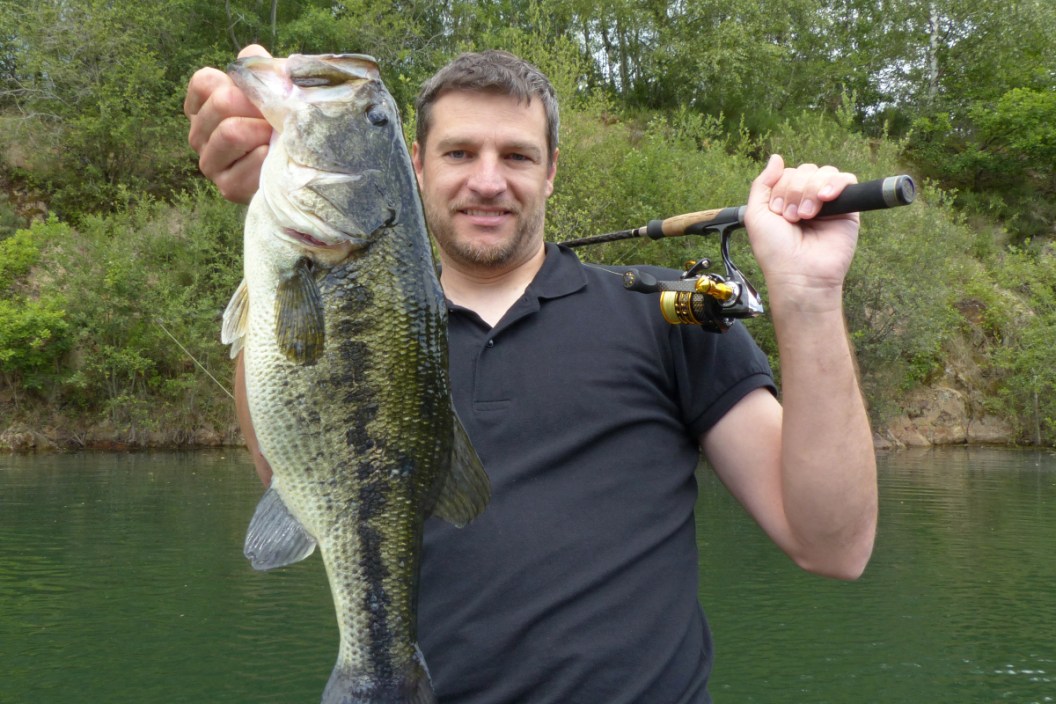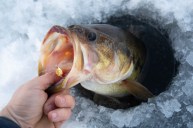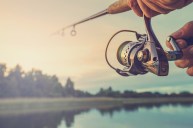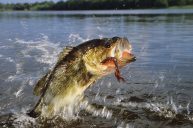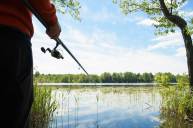With fish still still coming out of their winter slumber, fishing deep water during the early spawn is the way to go.
Late winter, early spring, whatever you call it, we as bass fishermen have always found it to be one of the more difficult times to target bass. However, it doesn't always have to be that way. While bass can and will hone in on an area and stay there, the fact remains that they are a transitional fish that are constantly on the move from day to day, and season to season.
Water temperatures and food are big keys to bass fishing success. But in the early season as the water begins to warm, it is the spawn that dictates much of a bass's movements and activities. There's a lot of different factors in play here like water flow, differing types of structure, and water temperatures can all affect what they do until the time to spawn arrives.
Today we'll examine some tactics for targeting fish at all parts of the spawn. However, we're going to put a special focus on deep water during the early spawn and why you might want to target a little more often than you have in years prior.
Why Deep Water?
When the water is clear, sun penetration can have an effect on water temperature down to 10 feet in some areas. This has a great influence on weed growth. This, in turn, can turn on insects and invertebrates which now find it worth the expense in energy to get out and feed. It then follows that baitfish will hone in on them, and with that, the bass aren't very far behind.
Certainly, bass always have the need to feed, but when it comes to the pre-spawn period even more so. They need to build up their energy reserves for the task and hand, and that's why there's a feeding frenzy prior to the spawn. This is the difference between targeting fish that are starting to feed, and those that are possibly protecting a nesting area. The nesting fish aren't necessarily feeding when they strike your lure. It's more likely they are defending their eggs or fry.
One of the most important things to remember is that bigger fish tend to group together near breaklines and drop offs. They will almost always hang tight to structure. Odds are, if you find one fish, there's probably a couple of his buddies with him. Fish slow, and fish thoroughly in that area.
For more open areas that include a good dose of rocky structure, rocks and boulders have the ability to absorb and even reflect some of the sun's energy and share it with the surrounding water. Areas with rocks near deeper water are perfect to target. They give nearby fish an area to move up and down out of deeper water to easily access the structure they prefer.
There's a great old adage in bass fishing that we should all keep at least two different rods at the ready with different baits, and this really holds true at this time of the year. Fishing a jig slowly in the early spring in deeper water can find fish that have taken to feeding on the emergence of the year's new crawfish, while having a suspending crankbait on the other combo can target suspended fish that are ready to feed, but still a little lethargic.
Honestly two of the best choices would normally seem to be warm month tactics: a square bill crankbait and a smaller spinnerbait. These two offerings can find fish that are actively feeding, even if they don't garner a lot of hookups since they will follow them and show themselves. After that, it is up to the angler to change to a tactic that will get them to hit.
Pre-Spawn Bass Fishing
Anglers in the southern states usually don't have to deal with the annual ice out that the northern states do, but it still stands to reason that rapidly warming shallow waters come into play at this time of year for both. Depending on the body of water that you are intending to fish, pre-spawn, spawn and post-spawn fish are a factor. Although they are likely affected by how quickly those waters have warmed. After the ice out, look for shallow coves and bays (better with dark bottoms) since these areas will warm up faster. If these spots are loaded with rocks all the better, because in these areas insect activity will attract baitfish. That will bring the bass in next.
An obvious rule of thumb in bass fishing is that fish will feed plenty in the spring to regain lost weight due to the winter doldrums. While we are waiting for shallow water to warm, check out points with access to deep water, channels or other depressions near to obvious spawning areas. These are usually great staging areas for bass that are in the early phases of the spawn.
If you are fishing unfamiliar waters, good electronics can help you to home in on these places since they aren't always visible to the naked eye from above. Jigs and crankbaits, (especially lipless crankbaits), are all effective on fish that are still residing in deeper waters.
But let us not forget finesse tactics such as the drop shot and the Carolina rig. When fish are still deeper in the water column, bass anglers can have success with big fish using these methods. Of course, one the toughest things to do when targeting deep water structure is to slow down and let your bait do the work for you. Here is where some good fluorocarbon line works great since it gets down into the water quicker and stays there, while also disappearing better in clear water.
Deep Water Bass Fishing

Getty Images: michaldziekonski
It's not always about the feet of water when fishing for pre-spawn largemouth bass. It can also be about finding what bass like at this time of the year. It's also a little too easy for us as bass anglers to fish those first few times like it was still summer when we can grip it and rip it to find fish.
Slowing down is the order of the day when targeting deep water fish. Even then, when we fish deep in the summer, it is usually due to the heat. In the early spring, the opposite is true. The one thing that remains the same is that the fish are still going to be lethargic. Therefore, the priority is to fish slow and thorough.
Usually on larger lakes and impoundments, the south shore will warm the quickest at this time of year, but don't discount the northern shores with south-facing shorelines as they are exposed to the sun for long periods of the day and protected from cold northern winds.
When the water really begins to warm up and bass can be seen making their beds and exposing themselves in the shallow water, sight fishing and stealth become the key. Until then, anglers just have to be a little more patient and take a little more time to find fish. Those that do will be awarded with some great fishing. Who knows? You may be the only one on social media with the pictures to prove it!
Looking for a little more or even hot lunch for your hunting blind? Follow my webpage, or on Facebook and YouTube.
NEXT: "FISHIN' IN THE DARK" IS PERHAPS THE MOST MEMORABLE FISHING SONG IN HISTORY
WATCH
